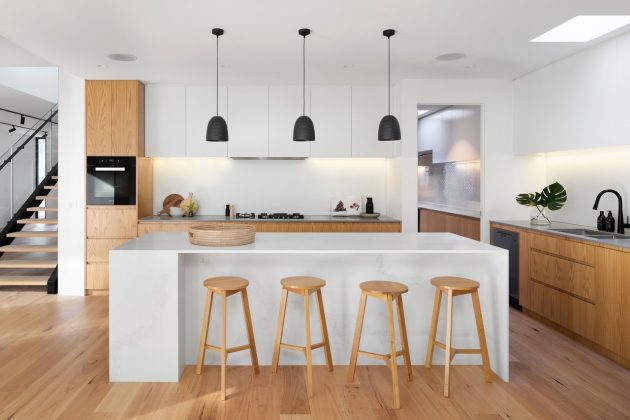Aside from the bathroom, the kitchen is the trickiest room when it comes to painting. When carrying out the restoration works in your kitchen, you should remember about few important aspects. Check how to avoid the most common mistakes!
The kitchen is most likely the most problematic room in the whole house due to dynamically changing conditions. Since we use it for cooking and eating, it gets much messier than the other rooms. Cooking equals temperature swings and a lot of steam, which increases the humidity. These factors may have a negative influence on your furniture and walls.
At the same time, the kitchen surfaces are at a much higher risk of discoloration and other sort of damage due to contact with natural acids. That’s why, when organizing your kitchen, it’s worth paying attention not only to aesthetics but also the functionality. Before launching the project, you should focus on finding materials that will last regardless of the changing conditions. The resistance to humidity, water, and mold matters not only in the exterior house painting, but also in the interior one.

Which paint should you choose for painting the kitchen?
You may wonder what products to use in order to make your walls resistant to the challenging temperatures and humidity levels in the kitchen. The best way is to choose the products made specifically for kitchens and bathrooms. They contain water-resistant ingredients, like, for example, the acrylic resin, which increase their durability and help to prevent the development of mold.
Search for durable, well-adhesive and humidity-resistant paint like latex or acrylic. They both cope well with the humidity. In addition, they’re easy to wash.
How to prepare the kitchen walls for painting and decorating?
Before applying the paint, you should check the state of your walls. The best is to hire professional painters and decorators that will carry out deep expertise, verifying which steps you need to take in order to make the surface suitable for house painting and decorating. If there are some cracks or holes, you may need some refilling. Sanding, polishing, and applying primer will also be necessary.
How to deal with mold in the kitchen?
It’s not uncommon to have mold in the kitchen. The humidity from the steam creates favourable conditions for it to develop. If you notice that it’s already there, don’t cover it with paint – it’s counterproductive. You need to remove the spores, which will most likely survive under the layer of paint. To do so, use the anti-fungal spray or liquid (some of them contain chlorine, but there are some exceptions). Most painters and decorators in London offer the service of removing mold when house painting.
To prevent the development of mold in the future, start from adding the dedicated product to the primer. Dehumidifier will also be a good investment, since it doesn’t let the humidity reach the extreme levels.
Article prepared in cooperation with Ignas Limited – painting and decorating company London.














